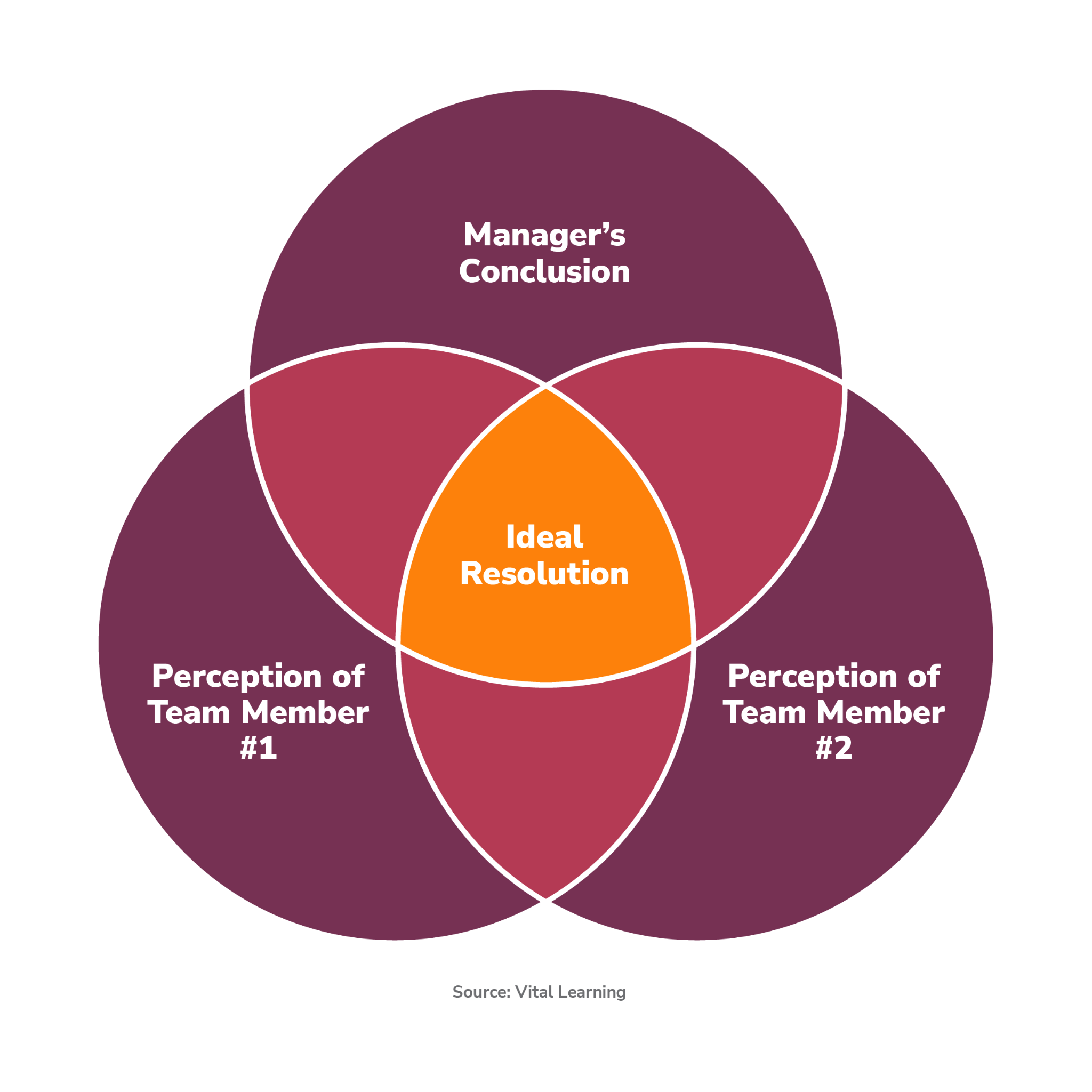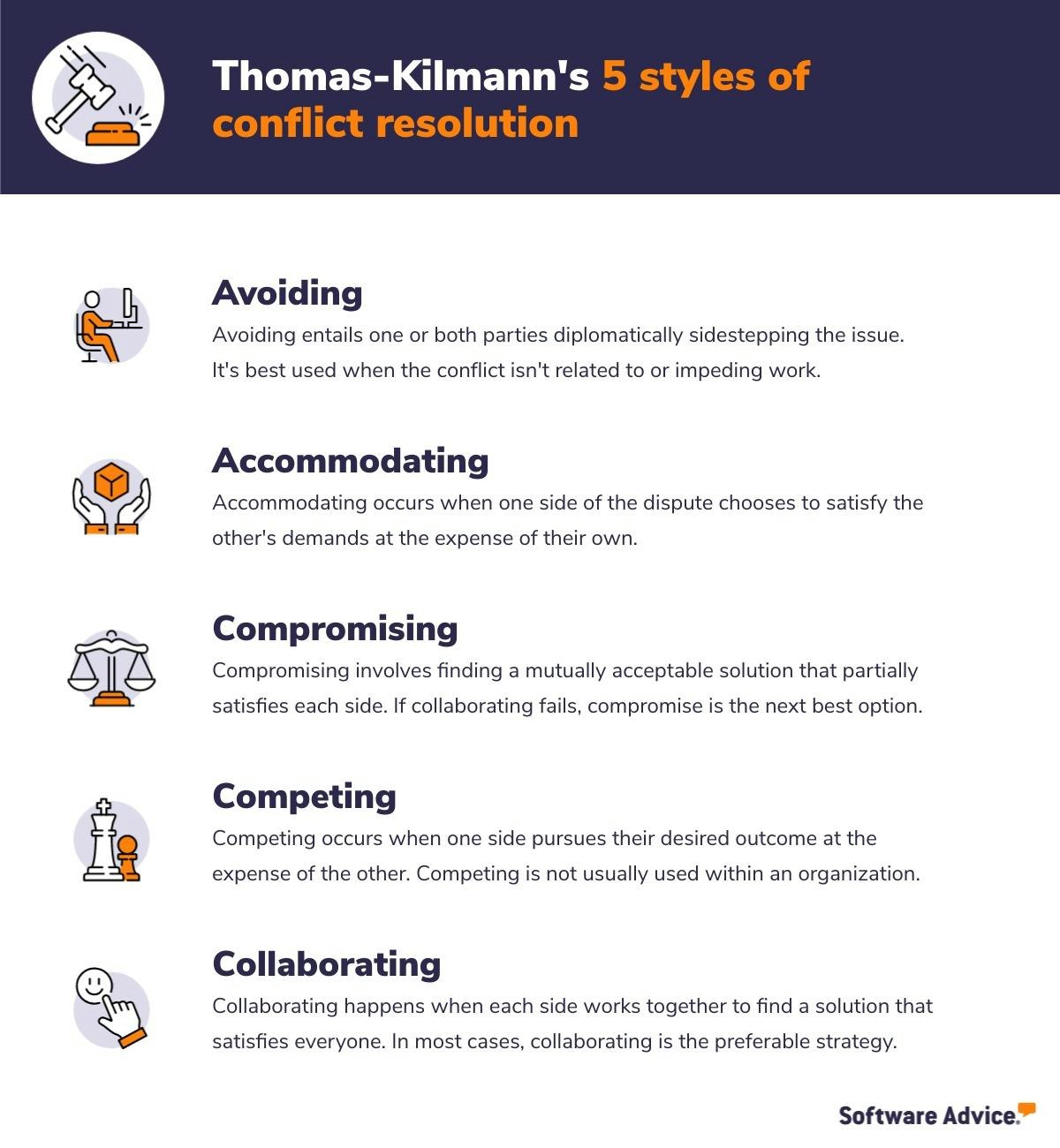A 5-Step Guide to Conflict Resolution at the Workplace
Conflict: It’s not pretty, but it’s a normal part of life. And sometimes it creeps into your workplace, whether it’s due to personality differences between employees or larger issues like patterns of harassment or bullying.
Workplace conflict isn’t something to ignore. A study found that employees spent nearly three hours managing conflict, which amounts to thousands of dollars in lost productivity.
And that’s not even the worst of it: Other consequences of workplace conflict include increased absenteeism, employee turnover, toxic work environments, and at worst, lawsuits.
The reality is that leaving employees to work it out between themselves isn’t always going to end in harmony. That’s why HR professionals should learn how to act as a mediator during instances of workplace conflict—to quickly quell disagreements before they escalate and start to negatively impact your business.
We’ve put together this five-step guide to conflict resolution to prepare HR pros to act as mediators when employee conflicts arise. We’ll walk you through each step and provide to-dos that will help you stay organized throughout the process.
1. Seek to understand the source of the conflict
Conflict can arise from a long list of culprits, including personality differences between co-workers, inappropriate or socially unacceptable workplace behavior, poor communication, and vague or unclarified expectations. Also, a workplace conflict isn’t always two people going head-to-head—sometimes conflicts occur between entire teams.
All this to say, the first step in the conflict resolution process is to pinpoint the scope and source of the conflict. Odds are, the conflict at hand was brought to your attention by one of the parties involved, but you won’t have a full picture of the problem until you discuss it with both sides.
We recommend speaking with each of the involved parties independently before kicking off a mediation session. This will allow them to share their side of the story candidly and without interruption. Take notes or record these conversations so that you can refer to them later on.
Mediator To-Do:
Use these questions to get the conversation going:
From your perspective, how did this conflict begin?
Who all do you feel is involved in this workplace issue or dispute?
How is this situation affecting your day-to-day work?
What would your ideal resolution or outcome look like?
2. Next, summarize the points of contention
Having conversed with all involved parties, you should have a clearer understanding of the conflict at hand. Before entering a mediation session, take time to get organized; specifically, make sure you can eloquently summarize what the involved parties are in disagreement over.
Conversely, it’s also a good idea to identify common ground between those on each side of the conflict. For instance, consider whether there is any overlap in the desired outcomes for each person. Common ground helps unite employees who are at odds, making it easier to see the point of contention as the “enemy,” rather than one another.
Mediator To-Do:
Prepare a bulleted list of observations you can bring to the mediation session. This list should include what you believe to be the point (or points) of contention between the parties, as well as any common ground you can find between those involved.
3. Prepare each party for the mediation session by setting ground rules
In order to set your employees up for a successful mediation session, you’ll need to create some ground rules. These rules are meant to set expectations for how disputants and the mediator should behave during the session, as well as outline how the conflict resolution strategy will work.
For example, it’s important to explain that your role in managing the unresolved conflict isn’t to take sides. Instead, you’ll be a neutral participant who is there to help the disputants find a solution to the conflict, and hopefully, improve their working relationship.
Here are a few examples of rules that can help you practice healthy conflict resolution:
Do not interrupt when others are speaking
Give others equal opportunities to speak
Practice active listening when others are speaking
Use “I” statements instead of “they” or “you” to avoid assigning blame
Mediator To-Do:
Create a set of ground rules for the mediation session and share them with anyone who will be involved in the session. Ask the participants to confirm they’ve reviewed the rules, and once you’ve received their affirmation, find a time when everyone can meet in person or through video conferencing and schedule the session.
4. Host the mediation session
Next, it’s time to get everyone together and hash out a solution. Whether you’re meeting face-to-face or virtually, we recommend recording the session for documentation purposes.
Typically, a mediation session will follow a structure similar to the one we’ve outlined below:
First, the mediator will start with an introduction. You can use this time to reiterate the ground rules and the goal of the session.
Next, the mediator will give a brief overview of their interpretation of the conflict at hand. Avoid using language that shows bias or assigns blame to either side.
Then, allow the disputants to take turns sharing their point of view. Encourage them to describe the conflict and its consequences in their own words. Other participants should not interrupt during this time.
Once everyone has had a chance to speak, kick off the group discussion. Give participants a chance to respond to each others’ prior statements, but make sure that it’s in an effort to further define the issue, rather than reaffirm their own perspective.
Begin to brainstorm possible solutions with the disputants. Start by sharing your own proposed resolution, then encourage each disputant to share what their ideal outcome would be. Ultimately, where each of the proposed solutions overlap will be the best resolution—this kind of conflict management is called collaborating.

Finish the mediation session by assigning clear next steps to each participant. When all parties have agreed on a resolution, wrap up the session by laying out the next steps for each participant. We recommend formally documenting the resolution that was agreed upon and having each employee either sign the document or respond with their acknowledgement of it via email.
Of course, getting all involved parties to agree on a solution is not always a straightforward endeavor. If the disputants cannot come to an agreement, or one or both sides appear obstinate, it may be necessary to discuss these issues with an external experienced workplace mediator. However, before you do that, there is one last Hail Mary you can try: The TKI.
Thomas-Kilmann’s 5 styles of conflict management
When in doubt, turn to the Thomas-Kilmann Conflict Mode Instrument (TKI), an assessment tool trusted by HR professionals around the world. The TKI can be used to find the most appropriate resolution approach out of five recognized styles of conflict management:

When it feels like you’re in the middle of a standoff with no sign of a resolution in sight, use the TKI for guidance. After taking the assessment, it will provide you with a recommendation for the style of conflict management that will best work for the situation at hand.
5. Follow up with the involved parties
A couple of weeks after the mediation session, check in with those involved to see how the resolution plan is going. Ask them if they’ve taken the next steps they agreed to and if they feel like the conflict is resolved. If their answer is no, don’t fret—but do consider outsourcing the problem to a professional workplace mediator.
Lastly, wrap up the employee conflict by thoroughly documenting the discussions you had with each involved party, as well as the resolution that was agreed to by all.
Mediator To-Do:
Share the outcome of the mediation session with any relevant stakeholders, such as managers or HR leaders. Then, request feedback from the involved parties on how the mediation session was handled so you can improve the process in the future. You can do this with a simple survey or through a post-session chat.
Make a more harmonious work environment
This guide has armed you with a strategy for managing conflict at your workplace, but there’s more you can do to promote a positive, healthy company culture. Check out the content below for more advice and insights relevant to today’s work climate.